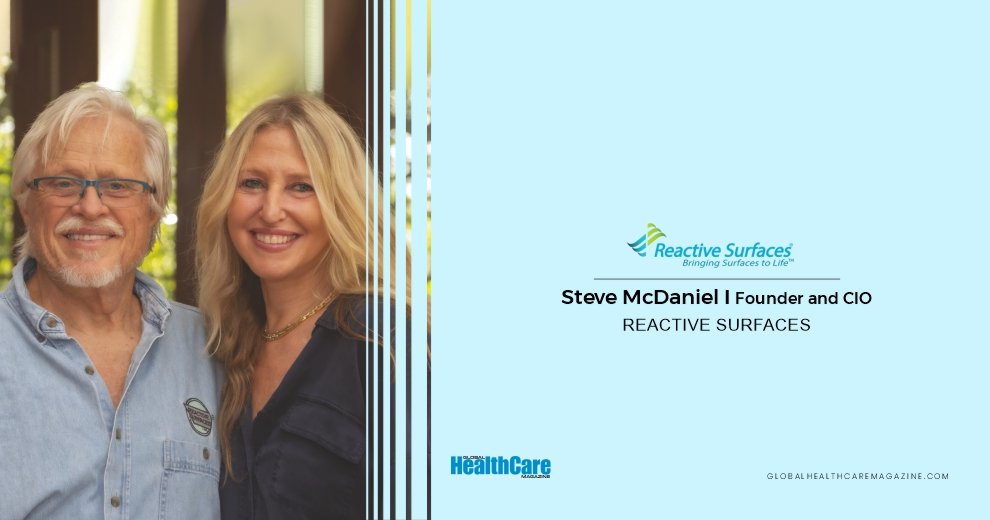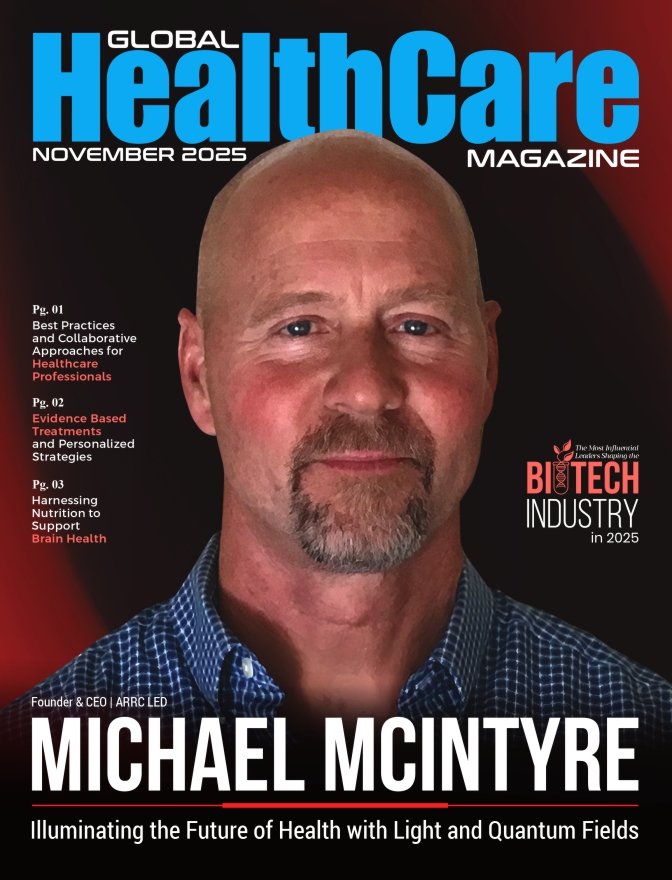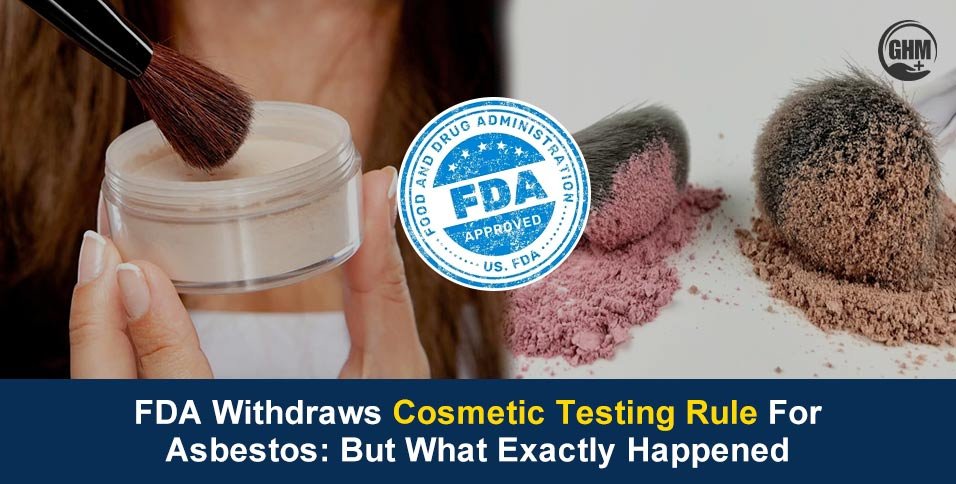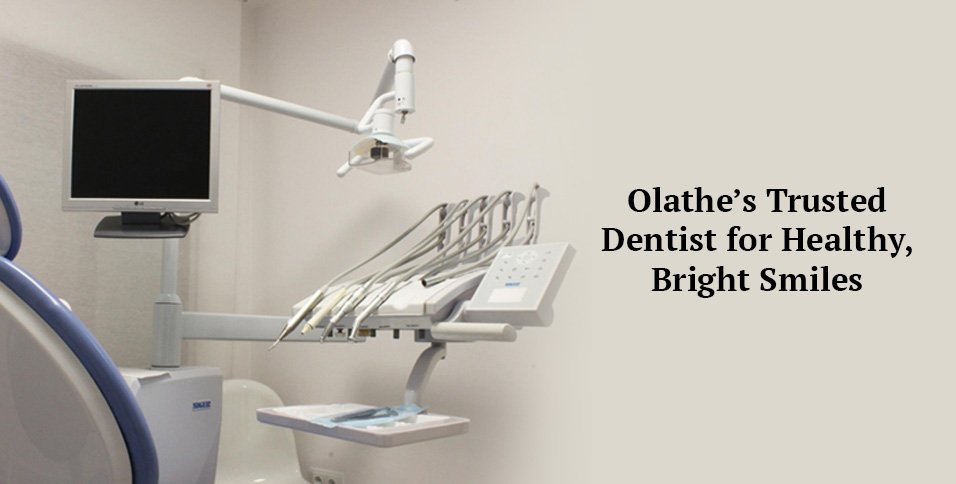Steve McDaniel never intended to spend his days thinking about paint. He was supposed to be a doctor. As a young man in a Pre-Med program, he saw his future in the quiet, sterile hallways of a hospital; a life spent mending human bodies. He was good at the prerequisite sciences, particularly biochemistry, that intricate dance of molecules that underpins life itself. But then he became a hospital orderly, and the reality of medicine, the raw, visceral, and often heartbreaking proximity to suffering, hit him with an unexpected force. He realized his temperament was better suited not for the immediate, messy work of healing, but for the patient, methodical solitude of research. It was a pivotal, quiet retreat from the bedside to the workbench, a decision that would, in the most unforeseen way, lead him back to protecting human health on a scale he could never have imagined.
Steve didn’t end up mending bones, but he would soon be working to mend the very fabric of our environment. His work began not with a grand vision, but with a humble curiosity about soil bacteria. In the quiet of his lab, he managed to clone a gene. It was a remarkable little piece of code from the earth, capable of producing an enzyme that could meticulously break down organophosphorus pesticides. It was a fascinating discovery, a neat biochemical trick. And for a time, that’s all it was.
Then came September 11, 2001. The world changed overnight. Suddenly, the “kissing cousins” of those pesticides, organophosphorus chemical weapons like VX, Sarin, and Soman, were no longer a distant threat but a terrifyingly plausible reality. A TV interview, a casual question about his research, and a friend with a business mind would conspire to pull Steve McDaniel and his dirt-dwelling gene into the global war on terror, and in the process, set him on a path to completely reinvent the surfaces we touch every day.
The Birth of a Reactive World
The logic was deceptively simple. Chemical nerve agents are not an invisible vapor; they are tiny, insidious droplets that are designed to settle on surfaces. They contaminate everything they touch: tanks, barracks, public buildings, computers, doorknobs. The question posed to Steve was straightforward: Could his enzyme work against these weapons? His answer was conditional. “Only if that enzyme could be entrained in a coating system and placed on a surface,” he reasoned.
It was a lightbulb moment. A business broker friend saw the potential immediately. If he raised the money, would Steve be willing to start a company to find out if it could work? Steve said yes. And with that, in 2002, Reactive Surfaces was born in Austin, Texas. The mission was to transform passive surfaces into active, self-decontaminating shields. The result was WMDtox, a coating additive that was nothing short of revolutionary. Tests confirmed it was over 99% effective at neutralizing organophosphorus chemical weapons. The implications were staggering. As Steve puts it, “a surface coated with WMDtox could be safely used as your dinner table just 24 hours after being exposed to a deadly nerve agent.” It wasn’t just a claim; in a September 2002 decision sheet, the NATO Army Armaments Group validated the discovery, stating, “This technology could be of significant importance in dealing with sensitive equipment or vehicle/facility interior decontamination.” The researcher who had found medicine too heartbreaking was now developing technology to save countless lives from one of humanity’s cruelest inventions.
The Universe in a Can of Paint
To understand how Steve’s technology works, you first have to reconsider what a can of paint really is. We see it as a simple liquid color, but on a microscopic level, it’s a complex and spacious universe. A cross-section of a polyurethane film reveals a landscape of pigment particles and titanium dioxide crystals, some measuring up to 525 cubic micrometers. A typical bacterial cell, by comparison, is a mere speck, only a couple of micrometers in size. Even smaller are bacterial spores. What this means is that a coat of paint is not a seamless, impenetrable barrier. It is a porous scaffold, a microscopic metropolis with plenty of room for microbial tenants to move in and set up shop. A painted wall can become a reservoir for disease.
This is where the genius of Reactive Surfaces’ core innovation lies. The enzymes and peptides Steve works with are infinitesimally small, the active enzyme in WMDtox is less than 0.01 cubic micrometers. They are molecular machines far smaller than the bacteria they are designed to fight. By entraining these bioactive molecules into a coating, McDaniel discovered they could retain their function, effectively transforming the entire paint film into a hostile environment for contaminants. They fit perfectly into the available space, lurking exactly where bacteria and spores reside, ready to act.
This principle opened up a world of possibilities beyond chemical defense. A pivotal opportunity arose when Steve, who is also an intellectual property attorney, was representing a biotech startup. The client had developed a library of 53 million synthetic antimicrobial peptides (AMPs) intended to treat respiratory infections in AIDS patients, but the prohibitive costs of bringing a new pharmaceutical to market had shuttered their efforts. In settling their affairs, Steve made a shrewd offer: he would exchange his legal fees for the patent rights to their entire peptide library. He had a hunch he could entrain these AMPs into a coating, just as he had with his enzyme. His hunch was correct. The result was ProteCoat™, a non-toxic, non-leaching antimicrobial additive that works for as long as the coating itself is intact.
It was a safer, more durable alternative to existing technologies like MicroBan, which leaches toxins and has been deemed ecotoxic in the EU. This innovation also addressed a deeper concern within healthcare itself. In 2015, for example, Kaiser Permanente chose to ban antimicrobial coatings from its hospitals, not out of indifference, but in alignment with the medical ethic of “first, do no harm” (primum non nocere).
Traditional waterborne coatings rely on toxic biocides to prevent spoilage in the can, and once applied, those toxins can leach into the environment, putting vulnerable patients at risk. Reactive Surfaces took a different path. By creating and patenting in-can preservatives made from naturally occurring, safe ingredients, the company eliminated the need for toxic biocides. Even more significantly, those same safe preservatives continue to perform once the paint is applied, providing lasting antimicrobial protection without compromising patient safety. In doing so, Reactive Surfaces turned a barrier into a safeguard, aligning science with medical ethics.
The Self-Cleaning Wall
The problem with conventional surface cleaning is that it’s a temporary fix. Disinfectants like bleach work, but they must be reapplied every time a surface is contaminated. It’s a constant, Sisyphean battle. Steve’s enzyme-based approach offers a more elegant and resilient solution. Once the core principle was established, the applications began to multiply. If an enzyme could break down a chemical weapon, what else could it deconstruct?
The answer led to innovations like DeGreez™. By entraining lipolytic enzymes, which break down fats, oils, and greases, into a coating, the surface essentially creates a microscopic layer of soap. Fingerprints, grease smudges, and oily films are continuously broken down, making the surface easier to clean. It’s the basis for anti-fingerprint coatings on computers and self-cleaning technology for everything from kitchen counters to sewer pipes. Another application tackles the growing crisis of antibiotic resistance. By entraining enzymes that break down DNA and RNA, Reactive Surfaces developed coatings that destroy stray genetic material in the environment, preventing microbes from incorporating antibiotic resistance genes into their genomes.
These represent a fundamental shift in how we interact with our built environment. The surface is no longer a passive victim of contamination but an active participant in its own hygiene.
The Art of Protected Innovation
Leading a high-stakes biotech firm requires more than just scientific brilliance; it demands a culture of fierce protection and collaborative creativity. “As a CIO, you must not just innovate, you must protect these innovations,” Steve states. This philosophy was put to the ultimate test in a David-and-Goliath battle with one of the world’s leading car manufacturers. Reactive Surfaces had pioneered and patented an enzymatic solution for oily fingerprints. The auto giant sought and wrongly obtained patents for a similar technology after them.
Invalidating a patent held by a global corporation is a monumental and expensive undertaking. Steve had to find highly skilled litigators willing to take on the case in exchange for a share of future royalties. He succeeded. The attorneys invalidated the wrongfully obtained patents, securing a victory that was as much about principle as it was about profit. It’s a testament to his dual identity as both innovator and legal strategist.
This drive is fueled by a culture of shared creation. Steve doesn’t see himself as the sole innovator but as a facilitator. He engenders creativity by bringing in leading scientists from powerhouse institutions like the University of Southern Mississippi, North America’s premier paint and polymer department, the University of Texas, and Colorado State University. “To be creative, lead with intuition and inspiration, and not merely intellect,” Steve advises.
This approach has yielded significant recognition. In 2008, Reactive Surfaces and their university partners received the first-ever American Coatings Award, an honor given to technology deemed likely to change the industry for the next 50 years. More recently, the company won the 2021 Waterbourne Coatings Siltech Best Paper award for a climate change technology, and its President, Beth McDaniel, Steve’s wife and business partner, was named a Thought Leader by Coatings World magazine in 2024.
From Microbes to Climate Change
Today, the mission of Reactive Surfaces continues to expand. They have built an impressive toolbox of materials that can serve as a first line of defense against microbial contamination and antibiotic resistance. The next frontier is migrating these laboratory successes into clinical trials to prove their efficacy in real-world hospital settings.
But the ambition doesn’t stop there. The same innovative thinking that turned a wall into a self-cleaning surface is now being applied to one of the most existential threats of our time: climate change. Reactive Surfaces invented ‘Carbon Capture Surfaces,’ a technology designed for the direct removal of excess carbon dioxide from the atmosphere. The company was named a Top 100 Finalist in the $100 Million XPRIZE for the Best Carbon Dioxide Removal Technology. Although that competition has since concluded, the recognition underscored the potential of their approach. It’s a technology aimed at addressing the root cause of health crises from respiratory disease to the spread of infectious illnesses.
For Steve, the intense pressure of this work is counterbalanced by a life of mindful pursuits. A lifelong interest in meditation provides a calm center. Fly-fishing and gardening offer a connection to the natural world that first inspired him. But the ultimate key to his work-life balance, he says, is having his wife, Beth, as his entrepreneurial, business, and spousal partner. Together, they navigate the financial and time constraints of the innovation business.
From a single gene found in dirt, Steve McDaniel has built a universe of technologies that are making the world safer, cleaner, and more resilient. The man who once shied away from the heartbreak of medicine has found a way to heal the world, one surface at a time.
Quote

Also Read: The Most Influential Leaders Shaping the Biotech Industry in 2025



















